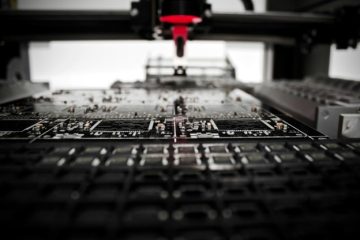Sustainability is no longer just a buzzword but a guiding principle for many industries, including construction. As awareness of environmental issues grows, custom home builders are increasingly embracing sustainable building practices to minimize their ecological footprint while creating beautiful, functional homes for their clients.
BuildLabs is one example of such a visionary construction company, whose commitment to sustainability is evident in every aspect of their work. In this article, we’ll delve into the world of sustainable construction, exploring eco-friendly building materials, energy-efficient design principles, and innovative techniques adopted by custom home builders.
Eco-Friendly Building Materials
One of the cornerstones of sustainable construction is the use of eco-friendly building materials. These materials are sourced responsibly, produced with minimal environmental impact, and often possess qualities that contribute to energy efficiency and indoor air quality.
Custom home builders have a plethora of options when it comes to selecting eco-friendly materials, including:
- Reclaimed Wood: Salvaged wood from old buildings, barns, and factories can be repurposed into flooring, paneling, and structural elements, reducing the demand for new timber and preventing valuable resources from ending up in landfills.
- Recycled Metal: Steel and aluminum sourced from recycled materials can be used for framing, roofing, and siding, offering durability and strength while minimizing the need for virgin resources.
- Bamboo: A rapidly renewable resource, bamboo is a popular choice for flooring, cabinetry, and countertops due to its sustainability, strength, and aesthetic appeal.
- Straw Bale: Straw bales, when properly sealed and coated, provide excellent insulation and can be used for walls in energy-efficient custom homes, offering natural insulation and reducing the reliance on synthetic materials.
- Low VOC Paints and Finishes: Volatile organic compounds (VOCs) found in traditional paints and finishes can release harmful chemicals into the air. Low VOC alternatives are available, providing a healthier indoor environment for homeowners.
- Recycled Glass: Crushed glass can be incorporated into countertops, tiles, and decorative elements, offering a unique aesthetic while diverting waste from landfills.
Energy-Efficient Design Principles
In addition to using eco-friendly materials, custom home builders prioritize energy efficiency through thoughtful design and strategic planning.
Energy-efficient homes not only reduce environmental impact but also offer long-term cost savings for homeowners. A Top Custom Home Builder will collaborate with homeowners to implement the designs they want, whilst offering suggestions based on their knowledge and experience of what can reduce energy consumption. Some key design principles include:
- Passive Solar Design: Orienting the home to maximize natural sunlight and minimize heat gain or loss can significantly reduce the need for artificial lighting and heating/cooling systems.
- High-Performance Insulation: Proper insulation, including advanced materials like spray foam and rigid foam insulation, helps maintain consistent indoor temperatures, reducing reliance on HVAC systems and lowering energy bills.
- Energy-Efficient Windows and Doors: Installing windows and doors with low-emissivity coatings and insulated frames minimizes heat transfer, improving comfort and reducing energy consumption.
- Energy-Efficient Appliances: Custom home builders often recommend ENERGY STAR-rated appliances, which meet strict energy efficiency guidelines set by the U.S. Environmental Protection Agency, further reducing energy usage.
- Natural Ventilation: Incorporating features like operable windows, clerestory windows, and ventilation systems with heat recovery capabilities enhances indoor air quality and reduces the need for mechanical ventilation.
Sustainable Construction Techniques
Beyond materials and design, sustainable construction techniques play a crucial role in reducing waste, conserving resources, and minimizing environmental impact throughout the building process. Custom home builders employ various strategies to achieve these goals, including:
- Prefabrication and Modular Construction: Off-site construction of building components allows for precision manufacturing, reduced material waste, and faster assembly on-site, minimizing disruption to the surrounding environment.
- Water Conservation Measures: Installing water-efficient fixtures, rainwater harvesting systems, and drought-tolerant landscaping helps conserve water resources and reduce the home’s environmental footprint.
- Construction Waste Management: Implementing recycling and waste diversion programs on-site ensures that materials such as wood, metal, concrete, and cardboard are properly sorted and recycled whenever possible.
- Green Roofing: Utilizing green roofing systems, which incorporate living vegetation, not only reduces stormwater runoff and improves insulation but also provides habitat for wildlife and contributes to urban biodiversity.
- Renewable Energy Integration: Incorporating renewable energy sources such as solar panels, wind turbines, and geothermal systems reduces reliance on fossil fuels and lowers greenhouse gas emissions over the life of the home.
The Final Words
As custom home builders embrace sustainable building practices, they are not only creating homes that are environmentally responsible but also healthier, more comfortable, and cost-effective for homeowners. By utilizing eco-friendly materials, integrating energy-efficient design principles, and adopting sustainable construction techniques, these builders are leading the way toward a more sustainable future for the residential construction industry.




